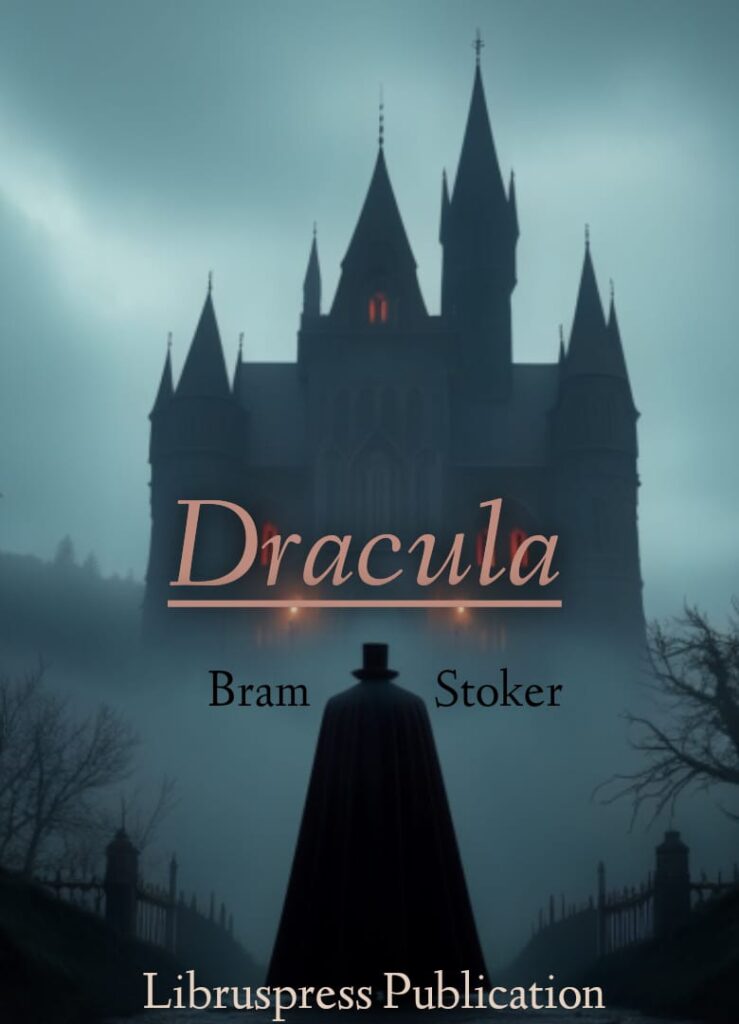Dracula
Dracula: A Gothic Masterpiece by Bram Stoker
Published in 1897, Dracula is one of the most influential gothic horror novels ever written. Irish author Bram Stoker crafted a chilling narrative that introduced the world to Count Dracula, a character who has since become synonymous with the vampire genre. What makes Dracula especially unique is its epistolary form—the story is told through a collection of letters, diary entries, and newspaper articles. This fragmented narrative style adds a sense of realism and immediacy to the horror as it unfolds.

Plot Overview
The novel begins with Jonathan Harker, a young English solicitor, who travels to Transylvania for a business trip. His destination is the remote castle of Count Dracula, a mysterious nobleman who is interested in purchasing property in England. Harker soon realizes that he is a prisoner in the castle and that Dracula is no ordinary man—he is a centuries-old vampire with terrifying powers. Through a series of harrowing experiences, Harker narrowly escapes the castle and makes his way back to England, but the danger has only just begun.
Dracula moves to England, settling in the seaside town of Whitby. His arrival marks the beginning of a series of strange and horrifying events. Lucy Westenra, a close friend of Harker’s fiancée, Mina Murray, becomes Dracula’s first victim. Despite the efforts of her friends and family, including the renowned professor Abraham Van Helsing, Lucy succumbs to Dracula’s influence and becomes a vampire herself. Van Helsing, along with a small group of allies—including Harker and Mina—begins to hunt Dracula in an effort to stop the spread of his evil.
The novel’s thrilling climax sees the group track Dracula back to his castle in Transylvania, where they finally destroy him, ending his reign of terror.
Themes in Dracula
- Fear of the Unknown
At its core, Dracula taps into the human fear of the unknown and the “other.” The character of Count Dracula embodies a foreign, mysterious, and supernatural force that threatens Victorian England. His presence in the novel represents a collision of the old world (Transylvania) and the modern world (England), with the vampiric curse symbolizing the fear of contagion, invasion, and corruption. - Victorian Anxiety
Stoker’s novel can also be viewed as a reflection of the anxieties of the late 19th century, particularly around issues of sexuality, immigration, and scientific progress. The vampirism in Dracula is often interpreted as a metaphor for forbidden or deviant desires, and the novel grapples with the tension between Victorian propriety and repressed urges. The invasion of Dracula from Eastern Europe into the heart of Britain also mirrors concerns over immigration and the fear of foreign influence. - Science vs. Superstition
One of the central conflicts in the novel is the struggle between science and superstition. The character of Van Helsing embodies this duality. As a man of science, he uses modern techniques and knowledge to diagnose Lucy’s condition, but he also relies on ancient folklore and superstitious remedies, such as garlic and crucifixes, to combat Dracula. This blend of modernity and tradition reflects the transitional period in which the novel was written, as society grappled with the rise of scientific reasoning while still holding onto older beliefs.
The Character of Count Dracula
Count Dracula is perhaps one of the most iconic figures in horror literature. His aristocratic demeanor, hypnotic charm, and terrifying bloodlust make him both alluring and horrifying. Unlike later portrayals of vampires, Stoker’s Dracula is a monster with little redeeming humanity. He is manipulative, ruthless, and driven purely by the need to feed and spread his curse. His ability to shape-shift into animals like wolves and bats, as well as his command over nocturnal creatures, makes him a formidable and fearsome villain.
Impact and Legacy
Since its publication, Dracula has left an indelible mark on popular culture. The character of Dracula has been adapted countless times in film, television, theater, and literature, and the vampire mythos has been expanded in various ways by other creators. Stoker’s novel laid the foundation for modern vampire lore, establishing many of the tropes that are still in use today—such as the vampire’s aversion to sunlight, the need for blood to survive, and the method of killing vampires through a stake to the heart.
Despite initial mixed reviews, Dracula has since become a classic of gothic horror. Its lasting influence can be seen in everything from early horror films like Nosferatu (1922) to contemporary vampire fiction like Twilight and The Vampire Diaries. The novel continues to be studied, adapted, and enjoyed by readers and audiences worldwide.
Conclusion
Dracula is a masterpiece of gothic horror, combining elements of fear, suspense, and the supernatural to create an enduring tale of good versus evil. Bram Stoker’s vivid storytelling and memorable characters ensure that this novel will continue to haunt readers for generations to come. Whether you are discovering it for the first time or revisiting its dark corners, Dracula remains one of the most captivating horror stories ever told.








